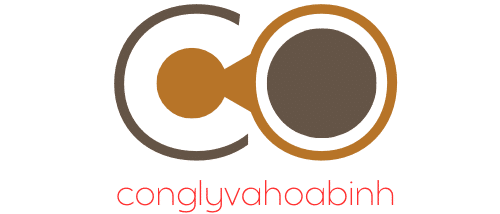The changing dynamics in the housing market and evolving community needs have led to a rise in the demand for healthier living environments. In the face of global health concerns and climate change, real estate developers are now challenged with creating housing projects that not only provide homes but also promote health, wellness, and sustainability. As you look to seize opportunities in this new market reality, incorporating certain strategies into your building design and development processes can help you meet these demands and cater to the needs of modern communities.
Incorporating Healthier Building Materials in Design
As real estate developers, you play a critical role in shaping the health of the public. By incorporating healthier materials in your building designs, you can contribute significantly to the health and well-being of future homeowners and communities.
Avez-vous vu cela : How to design flexible and adaptable real estate spaces for evolving business and residential needs?
Building materials can have a significant impact on indoor air quality, and consequently, on the health of residents. Certain materials release volatile organic compounds (VOCs) that can lead to a variety of health problems. By choosing low-VOC or VOC-free materials, you can create a healthier indoor environment.
Additionally, natural and recycled materials can provide healthier and more sustainable options. These materials can reduce the overall environmental impact of your projects and contribute to a healthier, more sustainable community. For instance, using natural materials like stone, wood or bamboo can lend a sense of warmth and authenticity to homes while also lowering the carbon footprint of your project.
En parallèle : What are the best strategies for real estate asset managers to optimize portfolio performance during market volatility?
Promoting Energy Efficiency and Climate Responsiveness
Energy-efficient design and construction practices are also key strategies for creating healthier living environments. An energy-efficient home not only reduces the homeowners’ utility bills but also minimizes the home’s impact on the climate.
An important aspect of energy efficiency is designing homes to be responsive to the local climate. This means considering factors such as the orientation of the building, the placement of windows and doors, and the choice of insulation materials. By doing so, you can ensure that homes stay comfortable throughout the year, reducing the need for energy-intensive heating and cooling systems.
Additionally, incorporating renewable energy sources, like solar panels, into your housing designs can further enhance energy efficiency. These renewable energy sources can provide a clean, green option for power generation, reducing the reliance on fossil fuels and contributing to healthier communities.
Developing Green Spaces and Community Amenities
Green spaces and community amenities are essential features that can add significant value to your housing projects. These spaces not only enhance the aesthetics of the community but also provide a range of health benefits to residents.
Green spaces such as parks, gardens, and walking trails offer residents the opportunity to engage in physical activity, connect with nature, and reduce stress levels. Similarly, amenities such as community gardens, fitness centers, and bicycle facilities can encourage healthier lifestyles.
By designing these spaces and amenities into your housing projects, you not only meet the needs of health-conscious homebuyers but also contribute to the overall health and vitality of the community.
Engaging with Local Communities
Engaging with local communities can also be a valuable strategy in your quest for healthier living environments. Through community engagement, you can gain valuable insights into the needs and desires of potential residents. This can help you design and develop housing that truly meets the needs of the community.
Whether through public meetings, online surveys, or other forms of community engagement, involving locals in the planning and development process can result in housing that is not only healthier but also more relevant and appealing to potential buyers.
Adopting Sustainable Development Practices
Finally, adopting sustainable development practices can be a key strategy in creating healthier living environments. This can involve using sustainable construction methods, utilizing renewable energy sources, and integrating green infrastructure into your projects.
Sustainable development practices not only benefit the environment but also make good business sense. By demonstrating your commitment to sustainability, you can appeal to a growing segment of the market that values eco-friendly homes and communities.
In conclusion, real estate developers have a range of strategies at their disposal to address the growing demands for healthier living environments. From healthier building materials and energy-efficient designs to green spaces and community engagement, these strategies can help you create housing that promotes health, wellness, and sustainability. Whether you are a seasoned developer or new to the field, incorporating these strategies into your projects can help you succeed in today’s evolving housing market.
Utilizing Smart Growth Principles for Estate Development
Real estate developers can utilize principles of smart growth to create healthier living environments. This approach to estate development seeks to promote compact, walkable, and diverse communities. It aims to integrate various elements such as affordable housing, a mix of land uses, and a range of transportation choices.
Smart growth is an effective strategy for promoting physical activity and public health. By creating compact and walkable communities, developers encourage residents to walk or bike more, offering opportunities for regular exercise. This, in turn, can lead to better health outcomes.
In addition to its health benefits, smart growth can also contribute to mitigating climate change. Compact and walkable communities often have lower carbon footprints due to reduced dependency on cars. Furthermore, by integrating diverse land uses, smart growth can reduce the need for long commutes, thereby reducing emissions.
Affordable housing is another critical element in smart growth strategies, as it ensures that a wide range of people can access the benefits of healthy living environments. By integrating affordable housing into your projects, you cater to varied income levels and promote inclusivity.
Implementing Green Building Certifications
Embracing green building certifications like LEED (Leadership in Energy and Environmental Design) or WELL Building Standard can help real estate developers ensure a healthier living environment. These certifications set rigorous standards for design, construction, and operation, focusing on aspects like air and water quality, energy efficiency, and use of sustainable materials.
Air quality is a significant concern in residential buildings, with pollutants like carbon monoxide posing serious health risks. Certified green buildings ensure better air quality by mandating stringent ventilation and filtration standards and promoting smoke-free environments.
The WELL Building Standard goes a step further by integrating wellness aspects into building design. This includes elements like access to natural light, use of biophilic design, and provisions for physical activity.
Adopting such certifications not only results in healthier buildings but also enhances the marketability of your projects. With the increasing awareness about climate change and wellness lifestyle, certified green and wellness real estate is likely to draw the attention of a discerning clientele.
Conclusion
In line with the growing demands for healthier living environments, real estate developers can harness an array of strategies ranging from smart growth principles for estate development to green building certifications. These not only help in catering to the wellness lifestyle pursued by a growing clientele, but also contribute to broader social goals like public health, climate change mitigation, and affordable housing.
These strategies also align with the initiatives of various institutions like the National Association of Home Builders and the Department of Housing, which aim to promote sustainable design and affordable housing. Therefore, adopting such approaches in real estate development is not only a response to market demands but also a step towards aligning with state and local objectives.
Despite the perceived challenges, such as potential increase in project costs or interest rates, the long-term benefits, both in terms of public health and market appeal, make these strategies a worthwhile investment. So, whether you are a seasoned player or a novice in the field, these strategies can help you create a distinctive brand in the competitive landscape of real estate development- a brand that champions health, wellness, and sustainability.




































